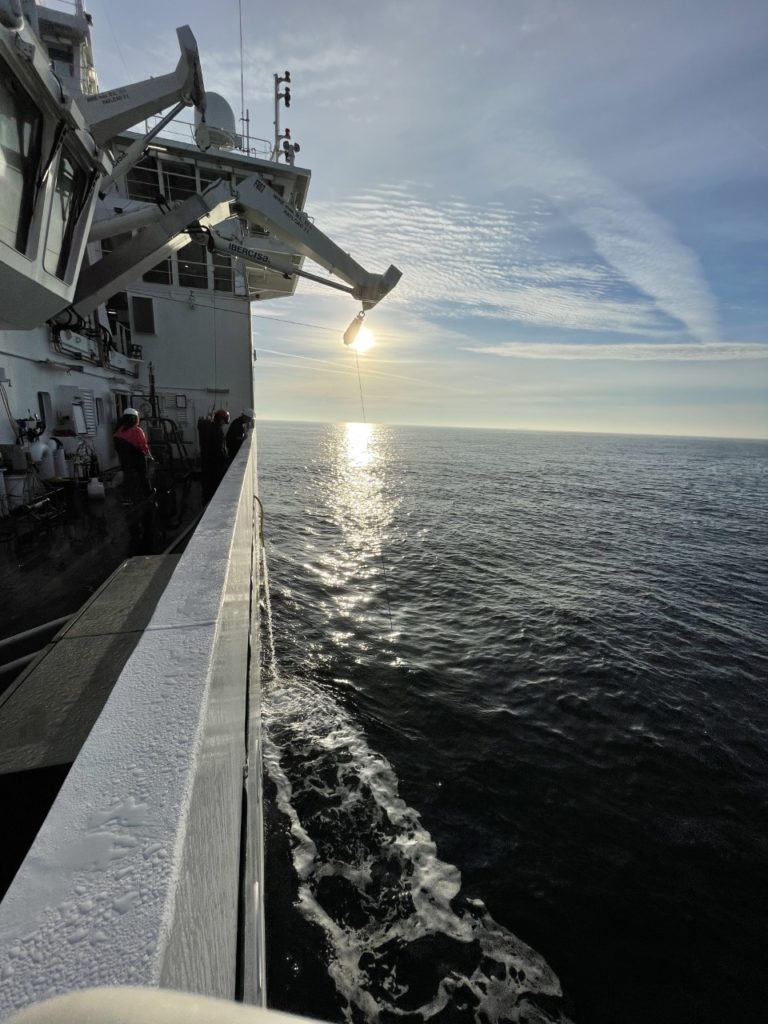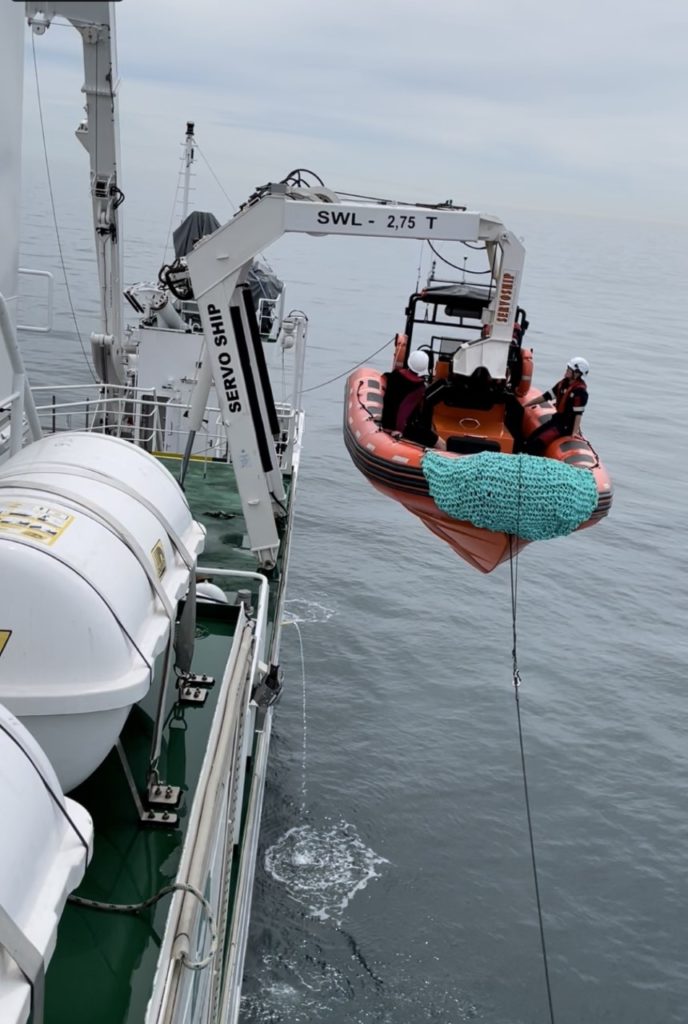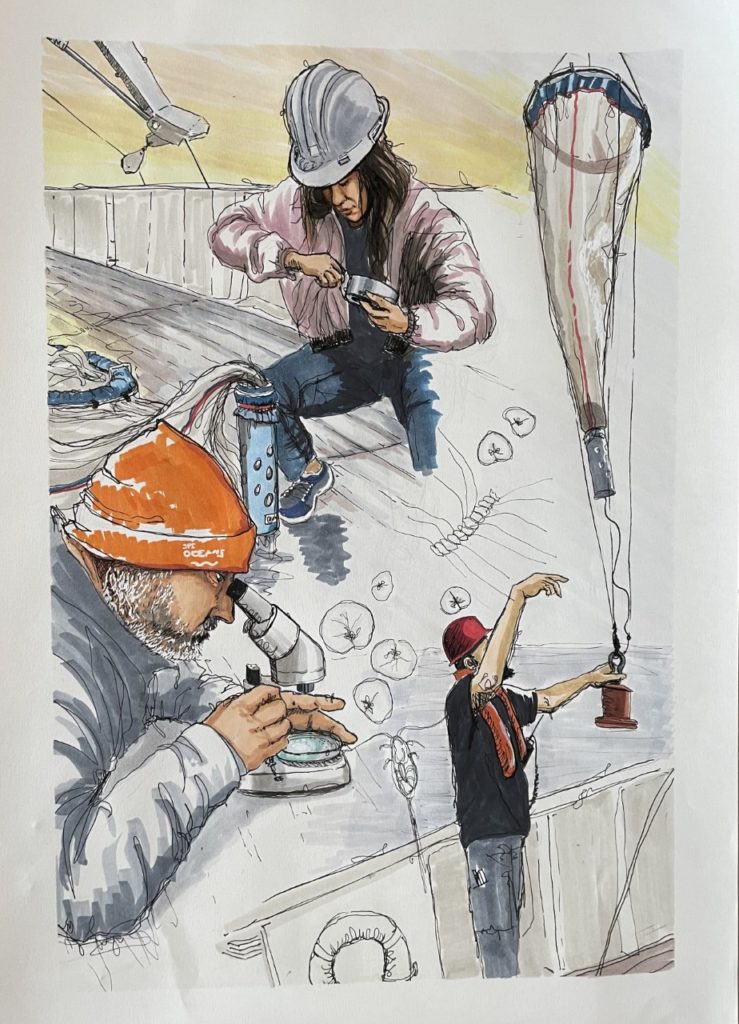Tuesday 12 July 2022
A planned change of plan
A specific feature of this S4GES cruise is that the definition of the sampling stations originally planned in the cruise programme are fine-tuned and continuously revisited during the cruise. Decisions are based on near-real-time “Ocean Colour” remote sensing imagery, processed from EUMETSAT. Accordingly, the cruise leadership decided yesterday to skip the second “deep” station in Dutch waters. Chlorophyll data from the same day from two Sentinel3 satellites had shown that the station would have been very similar to the previous one with low chlorophyll-a concentration, thus promising little additional scientific insight. Instead, the campaign moved therefore directly to a station with a higher chlorophyll signature, promising a regime of higher biological productivity and different ecosystem.
Early rise
During the night the RV Belgica sailed back into Belgian waters, to do two stations at water depths of ca. 35 meters. The first station of the day was perfect for early-birds and sunrise spotters. For methodological consistency, the tidal current minimum at 6 AM was under no circumstances to be missed! Accordingly, everyone was on deck at sunrise for nice shots (talking about photographs obviously) and a new set of samples and measurements. It appears that sampling and sample processing already run like a well-oiled machine, leaving space to get excited about first scientific observations (more of that over the coming days …) – and a world premiere (presumably)!

A first: Bio-Lagrangian drifter
A special highlight of the day was the release and recovery of a drifter that followed the plankton community. The so-called Bio-Lagrangian drifter provides a frame of reference while moving with the plankton community itself, i.e., the Lagrangian approach. Lagrangian drifters are designed to follow the water at the ocean surface, providing accurate measurements of ocean currents and their physical properties (temperature and salinity). Our Bio-Lagrangian upgrade is configured to also collect high frequency observations of plankton community properties with a bio-optical sensor. The sensor measures the scattering of visible electromagnetic radiation backward with respect to the direction of propagation. This “particle back scattering” relates to the particle concentration in seawater, including phytoplankton and non-algal particles (e.g. viruses, bacteria and detritus). The first Bio-Lagrangian drifter prototype has been funded by the Institute of Marine Sciences, ISMAR, of the National Research Council of Italy, CNR, and the first ever deployment took place today during the S4GES cruise – exciting!

Painting plankton
Meanwhile, our on-board artist Sarah-Marie Kröger found herself inspired by the fascinating world of marine plankton. Watching the deployment of plankton nets, recovery of the catch and microscopic inspection of the sample, she combined these respective scenes captured on board into a new painting. While yesterday’s portrait of the RV Belgica was more like a majestic still life, today’s picture is full of action and illustrating the fascination of research and researchers – or whatever else it stirs in you …

Text by Thorsten Kiefer (JPI Oceans) & Federico Falcini (CNR), Images by Thorsten Kiefer (JPI Oceans)
Other blog posts in this series
S4GES at sea with RV Belgica (part 1)
S4GES at sea with RV Belgica (part3)
